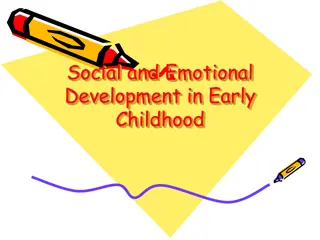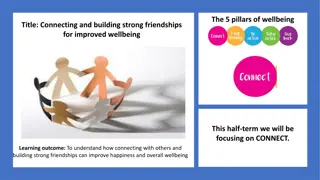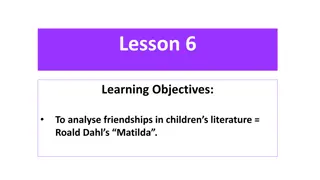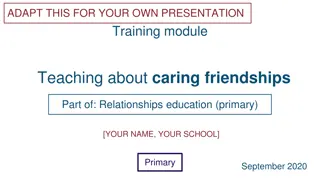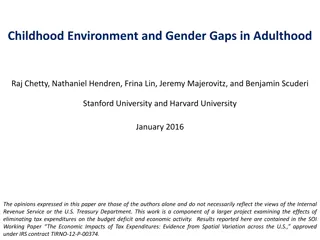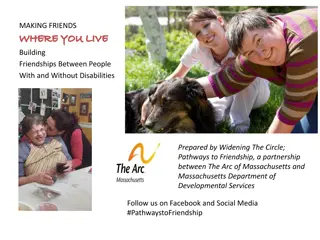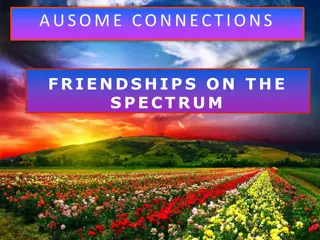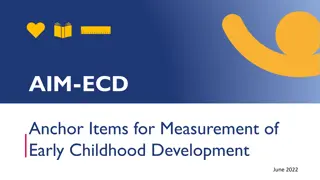Understanding Childhood Friendships: Development and Dynamics
Childhood friendships evolve through stages defined by behaviors, trust, and psychological closeness. Popularity, bullying, social competence, and gender differences influence the formation and dynamics of friendships among boys and girls during middle childhood. The quality and diversity of friendships play a crucial role in the social development of children.
Download Presentation

Please find below an Image/Link to download the presentation.
The content on the website is provided AS IS for your information and personal use only. It may not be sold, licensed, or shared on other websites without obtaining consent from the author. Download presentation by click this link. If you encounter any issues during the download, it is possible that the publisher has removed the file from their server.
E N D
Presentation Transcript
STAGES OF FRIENDSHIPS Stage 1: Basing Friendship on Others Behaviors Stage 2: Basing Friendships on Trust Stage 2: Stage 3: Basing Friendship on Psychological Closeness Stage 3: Stage 1: - Ranges from 4 to 7 years of age - Ranges from 8 to 10 years of age - Ranges from 11 to 15 years of age - Children see friends as others who like them and with whom they share toys and other activities. - Covers a period in which children take others personal qualities and traits into consideration. - Children begin to develop the view of friendship that they hold during adolescence. Psychologist William Damon - - a child s view of friendship passes through three distinct stages Psychologist William Damon
POPULARITY, BULLYING, AND SOCIAL COMPETENCE Popularity Popularity is related to the number of friends a child has - - More popular children are more likely to form cliques and tend to interact with a greater number of other children. Bullying Around 85% of girls and 80% of boys report experiencing some form of harassment in school at least once. About 10% - 15% of students bully other students. Bullying
BOYS BOYS GENDER - - They tend to have larger networks of friends. With status, they tend to have a leader and members falling into other levels of status. GIRLS In middle childhood boys and girls friendships are restricted to members of their own sex. The nature of the friendships between boys and girls are quite different. GIRLS -School-age girls focus on one or two best friends. -Girls prefer to maintain friendships at equal- status levels. Cross-race friendships Children s closest friendships tend largely to be with others of the same race. Cross-raced friendships are related to the degree of diversity in a setting.





